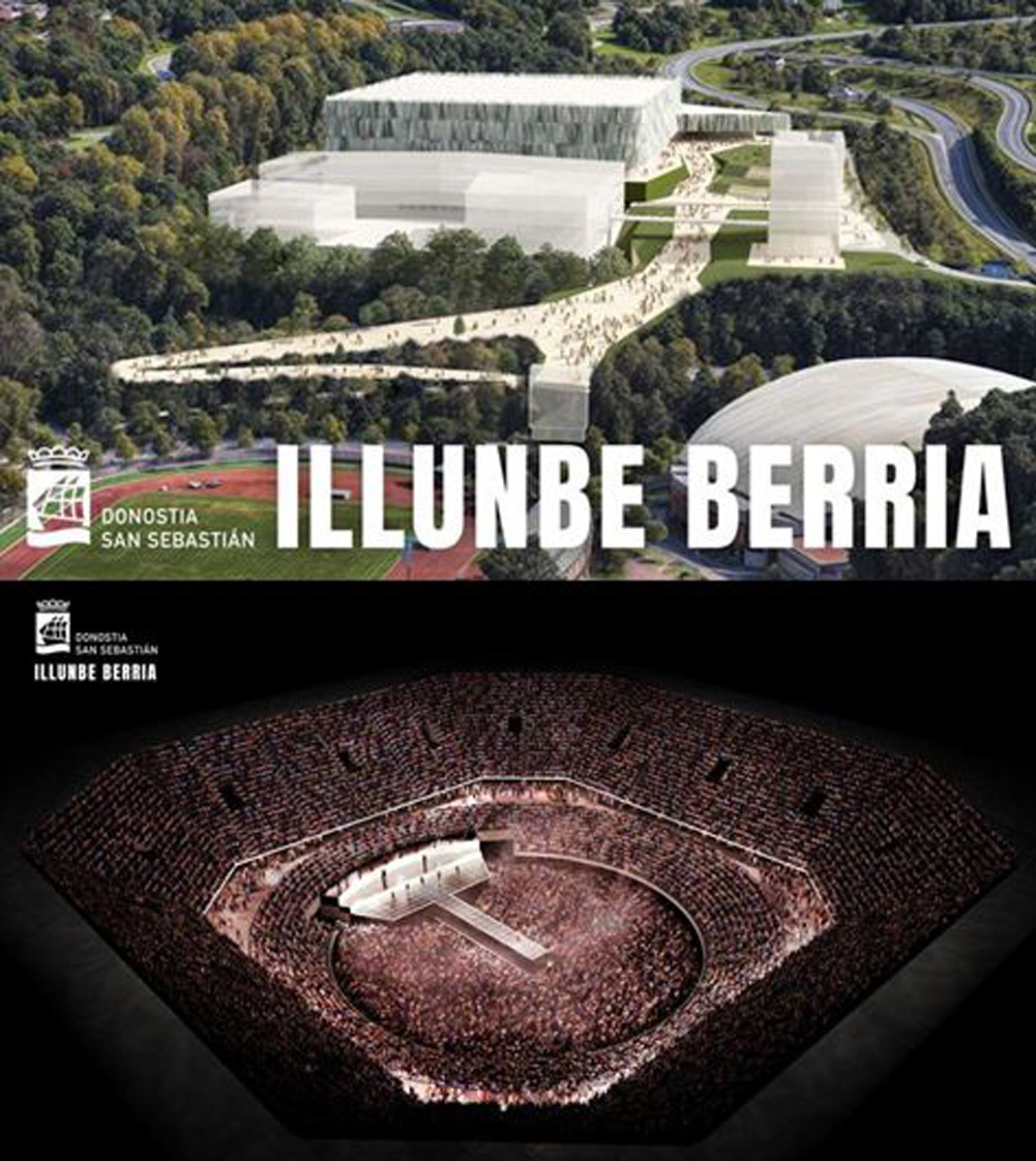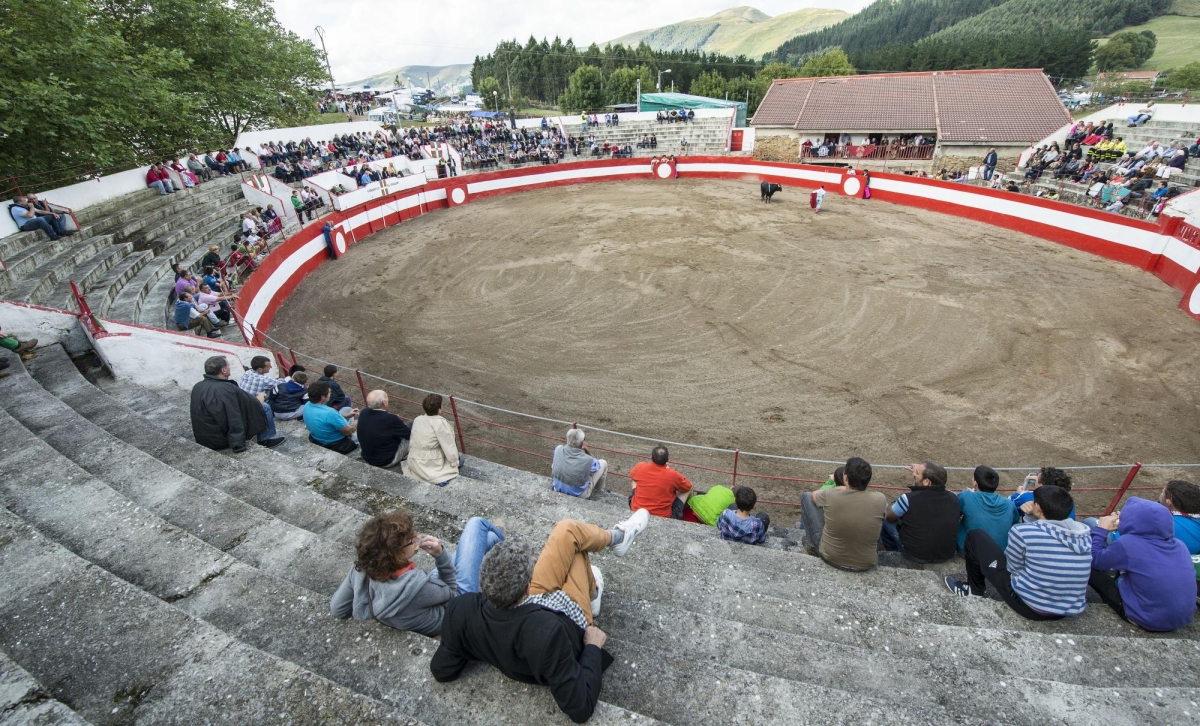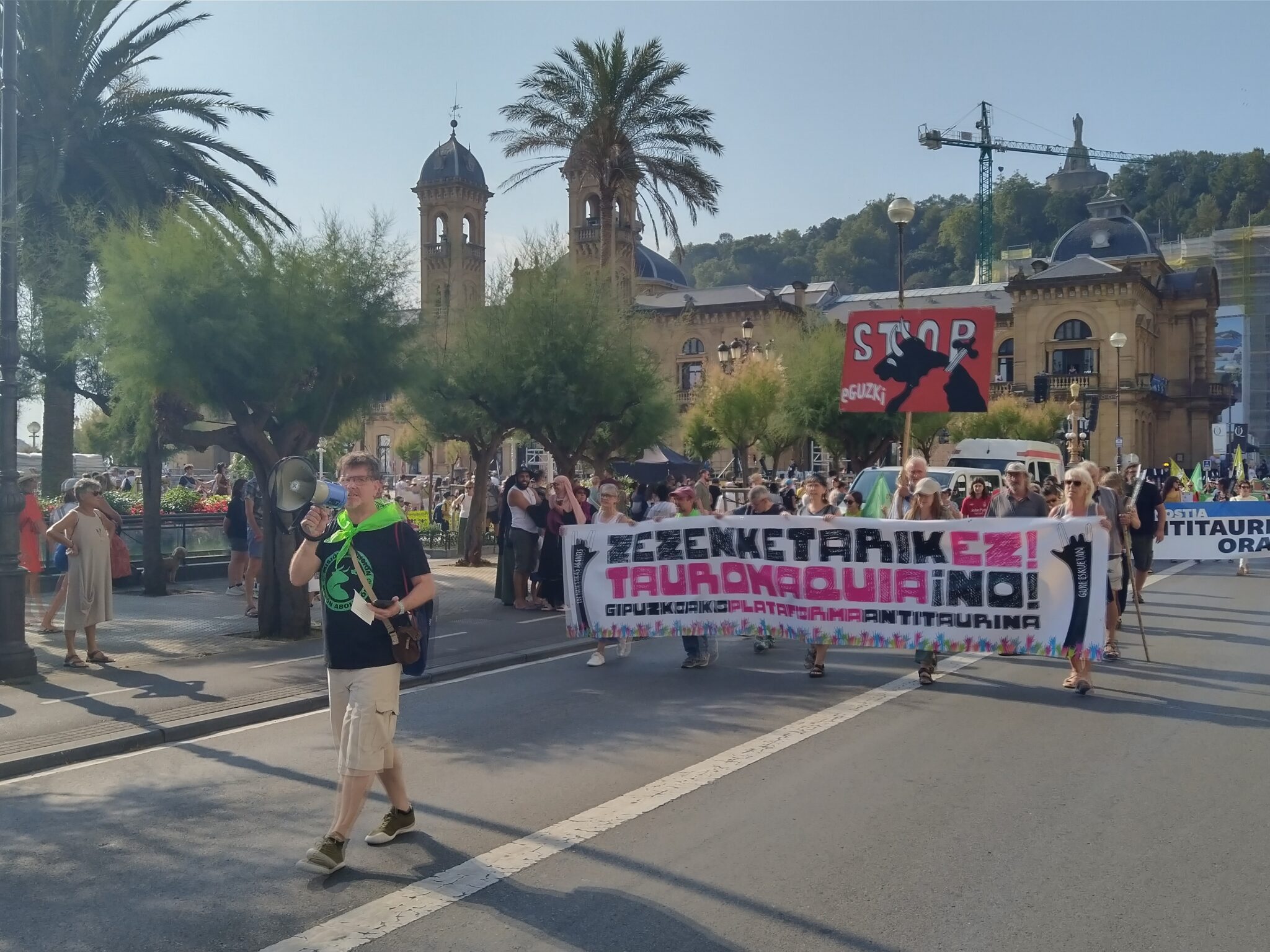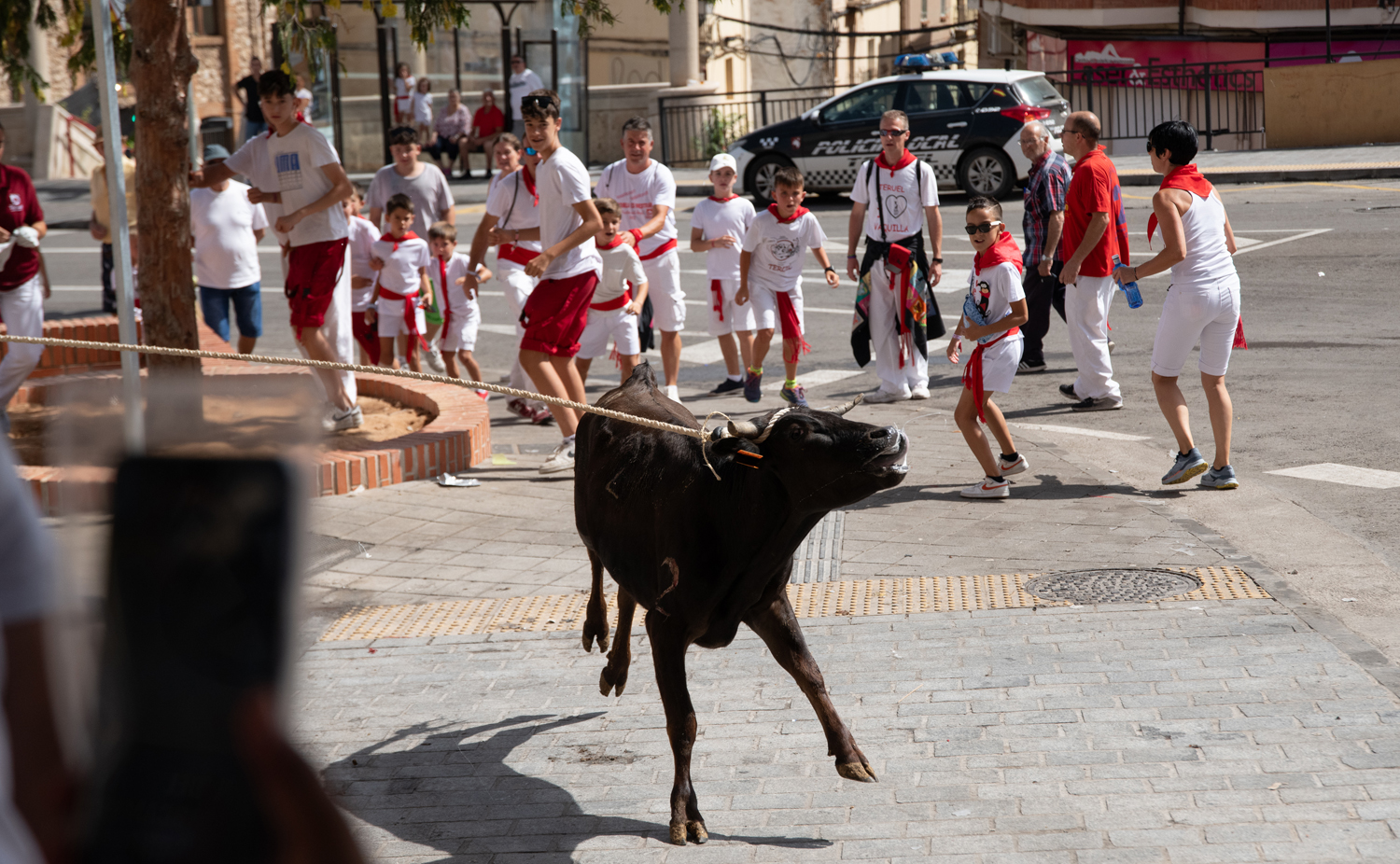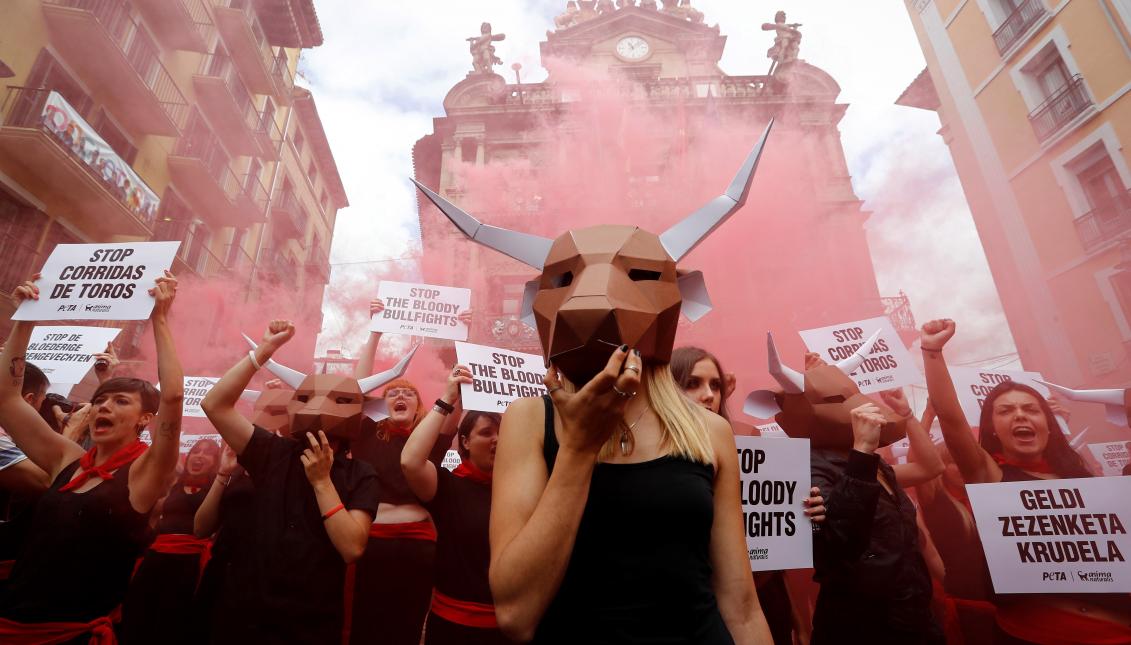Strategies against bullfighting in Sanfermin
- A number of agents have talked about parties without bulls, Zaunk! Anti-specialist agent Iruñerria in the talk 'The Bulls' organized in Laba de Pamplona. Among other things, they will talk about the importance of strengthening the alternatives, the responsibility of the peñas and the limits of the law.
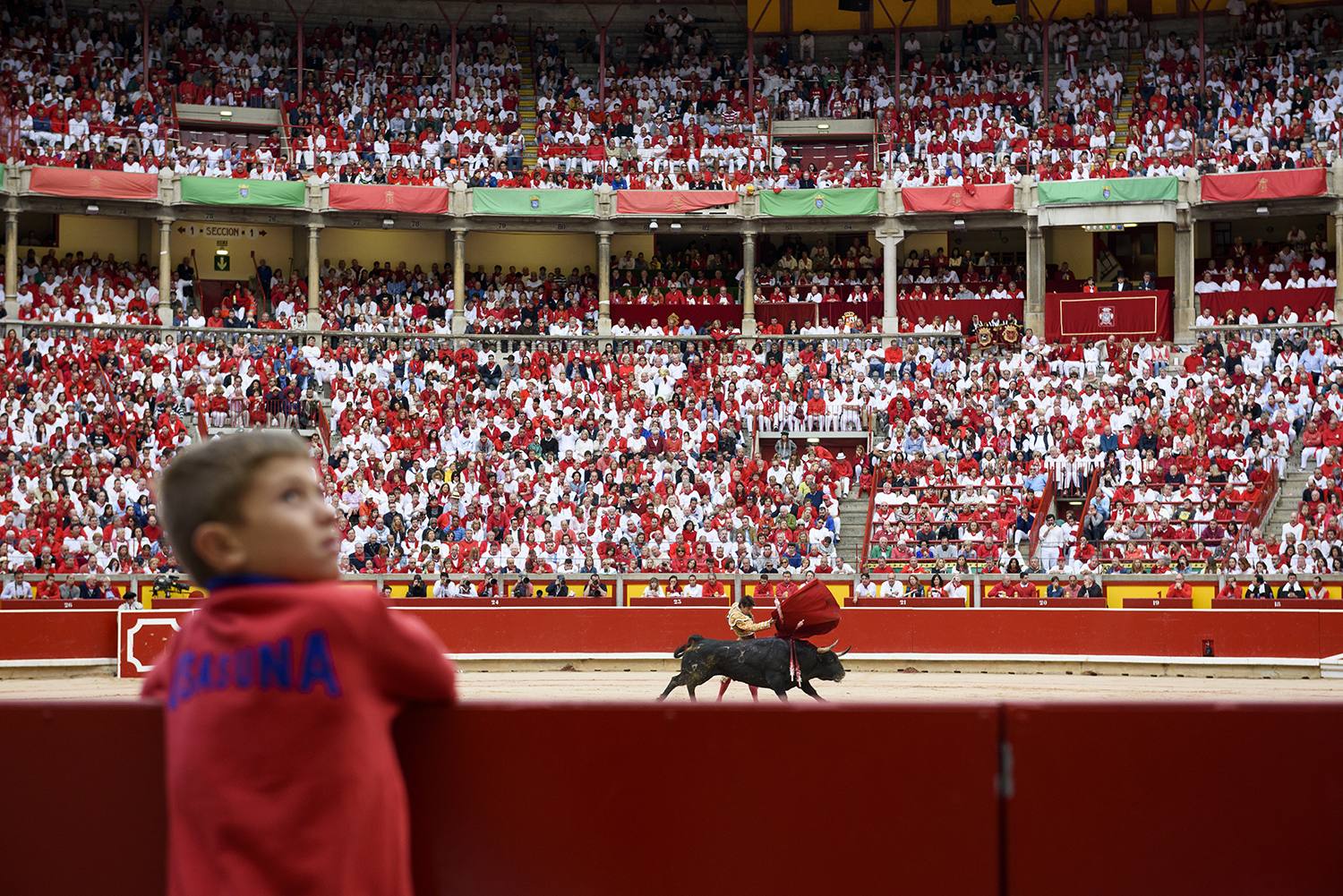
The streets of Pamplona/Iruña have been filled with red-white at the gates of Sanfermin. The fences of the lockdown are already arranged, and the bulls that day after day will be forced to run and die in the plaza are in the corrals of the Gas of Pamplona. In the previous months as well as in the Sanfermines, claims against bullfights are common, such as demonstrations, press conferences and banners. Bark! The talk by the anti-specialist group Iruñerria, held in May in Laba, is one more example of this. Idoia Azkona of the group Iruñea Antitaurina, Aika Martinikorena of the platform Herri Sanferminak, Iban Ageri of the group Iruña Antitaurina and Olatz Aranzeta-Reboredo, researcher of the center UPF-Centre For Animal Ethics of Barcelona have claimed bullfighting parties.
Herri Sanfermin is a platform created in 2016 among various groups in the Region of Pamplona, and its main objective is to change the holiday model proposed. They claim that they are popular, ecological, anti-capitalist, diverse, cultural, feminist, participatory and Euskaldunes holidays. Although these values do not include the word anti-bullfighting, Martinikorena explains that the “natural attitude” of the platform is the opposition to bullfighting: “In our holiday model there is no room for mistreatment or exploitation.”
That same year, Iruñea Antitaurina was born with the intention of ending the bulls. “We cannot forget the violence that occurs in the plaza and look elsewhere,” said Agi. Since then, two objectives have been established: to inform and sensitize the citizens of the Region of Pamplona in the short term and, in the medium or long term, to complete the bullfights: “If it’s happened elsewhere, why not here?”
Along the same road goes Zaunk! The Commission's proposal for a directive on the protection of the rights of non-human animals is a step forward. Azkona has underlined that the main objective is to socialise and extend antispecism: “We want to achieve the release of non-human animals.” He has highlighted two fundamental reasons for being against the bullfighting that is going to take place. On the one hand, he believes that we must turn the holiday model around and fight for models of parties free of oppression. It has also stressed that non-human animals have not been born to meet the wishes and needs of human beings: “We should not use them to feed us, to dress us, or to experiment… that is, to satisfy our whims.” He adds that each animal, in its own way, expresses resistance: “Non-human animals are interested in keeping them alive and have a desire to flee from situations that affect them and from suffering.”
He has joined the Aranzeta initiative of the Centre for Animal Ethics. The centre was established in 2015 with the aim of promoting non-specialist approaches in academia, politics, public opinion and the media. The researcher added that non-human animals have “moral consideration”: “We are against all these practices, because they show with suffering and make an immoral use of public money.” In addition, he added that many people do not know the economic interests behind bullfighting. You have given some information: 75% of the revenue from the bulls comes from subsidies to the Common Agricultural Plan, each farm spends more than EUR 600,000 a year, half of which is public money and only four of the 600 farms are economically profitable. “With that money you can do other things; if people knew it, they would resist bullfighting,” he said.
Idoia Azkona highlights three main axes in its strategies to end bullfighting: territoriality, "indifferent" or "parrandales" and "militant climate" of the Region of Pamplona
Peñas, change agent
Resistance to bullfights is not enough to finish bullfights. That is why there has been talk about the strategy to put an end to them. Azkona has highlighted three main axes: territoriality, the “indifferent” or “parranderos”, and the “militant climate” of the County of Pamplona. As for territoriality, Azkona makes it clear that local discourse has a greater impact than external criticism: “When the people of Pamplona have started to move from and to understand the reality of Pamplona and from here, taking into account the nuances, then they start to really move.” The main claim of Iruña Antitaurina is that Pamplona is not a bullfighting club, but an amateur to the sanfermines. According to Azkona, this discourse can be strategic.
The juerga is a factor to consider, according to him: “You have to look at those who don’t look at the bull, and they just go to the juerga, to get drunk and to enjoy the atmosphere of the charangas. In the end, if what you want is a juerga, through the alternatives we can get vacancies.”
Everyone has agreed on the importance of emphasising the alternatives. The Herri Sanferminak platform, for example, organizes anti-bullfighting daily at the time of bullfighting; thus, verbenas, concerts and other events. Within this program, every year, on July 7, at 19:00, the demonstration organized by Iruñea Antiraurina is celebrated, enlivened by the rhythm of the electrotxaranga. In addition, other spaces offer alternatives such as Laba and Matalaz. “The Sanfermines are becoming more and more capitalist, which is why it is important to protect these kinds of spaces,” said Azkona.
In addition to offering alternatives, Martinikorena considers that a change in the attitude of the wedges would have an “important” effect: “The wedges occupy the plaza. Pamplona is not taurine, but for the environment.” However, he believes that some changes are taking place in the wedges, even if they are “small”. Azkona has followed the same path: “Perhaps when the wedges come out of the square we can actually see the end.”
Aranzeta has addressed the issue of parrandantes since Legedita and explained that raising the minimum age to access the bullring at the age of 18 and banning alcohol consumption can be effective measures: “In addition to a measure to protect teenagers, many juerguists will wonder why to go, because they will not be able to throw the juerga.” This is a series of measures that have already been implemented in the Balearic Islands, but VOX and pp have again lowered the minimum age in CAV.
Lobbies and entertainment
Among the lobbies that defend the use of animals, Aranzeta analyzes the ways in which coordinated groups of support for bullfights are taking to influence the decisions of politicians and political institutions: “Many groups have emerged that respond to animalism and are doing very concrete things; for example, they are funding studies and theses to spread lies.” In addition, he has denounced that in Hego Euskal Herria the law is being used to remove powers from the municipalities of the region. According to Law 18/2013, of November 12, bullfights are a cultural heritage, so municipalities that claim to be against bullfights can have serious economic and “legal” consequences because it can be considered unconstitutional: “Bullfighting groups have denounced city councils as opposed to bullfighting, which has caused some to remain in a serious economic situation.”
To cope with this situation, under the motto Hau ez da nire kultura', they want to collect 500,000 signatures to repeal the law. On 5 July, the capital of Biscay will host two events, morning and afternoon, to collect signatures. He stressed the importance of Patxi Agirre and Aranzeta signing in favour of repealing the law.
Aika Martinikorena: "The peñas occupy the plaza. Pamplona is not taurine, but for the environment"
Need to expand the fight
Azkona believes that considering the militant potential of the County of Pamplona can be strategic. It is important to create alliances between agents. For example, via the Sanfermines or Bulls platform not! with the network. The network was created in 2022 in an assembly to mobilize against bullfighting and Zaunk! and Pamplona Antitaurina. In the year of its foundation, more than 50 accessions were received to bullfights, including musicians, social agents and tabernacles of the Region. Firman Iruñerriko Bilgune Feminist, Txirringudariak, Platform E28J, Haritu Elkarlaguntza Sarea, Matalaz, Katu, Oberena dantza taldea, Aurora Beltran, Maruxak, Tatxers, Saioa Alkaiza, Reymy …
Azkona believes that bullfighting should be approached from a broad perspective in order to strengthen alliances: “What’s going on in the plaza? What drugs are there? Who consumes them? How? What kind of relationships and attitudes are there? Are there more macho models inside? What culture do we perpetuate?”
He also considers it important to pay attention to other struggles such as the feminist movement and the Cuir movement. In fact, they have managed to broaden the definition of “the concept of aggression”: “Some of the attitudes that we once believed to be normal today are attacked by the majority of society and have managed to implement various protocols and suspend parties for the attacks”.
Aranzeta added that the Spanish Law of Childhood and Adolescence can also be inspired and that it is necessary to offer information and popular alternatives before the “passivity of society”: “From lobbies it is said that animalism is nothing: lack of culture, no existence, no pleasure. Faced with this, the existence of the agents who have participated in this conversation has an enormous weight, because you show that people live and enjoy these kinds of alternatives.”
What about the lockdown?
Although little has been said about confinement, the issue has sparked a debate among the Contertulians. Pamplona Antitaurina has been the only one who has spoken live on the Sanfermines lockdown this year. The representative of the group stressed that although it was initially discussed in the group on confinement, they are limited to the plaza only because it is more strategic and because displacement against confinement can be an obstacle: “We always say that the shutters have their rhythm and that we cannot silence what happens in the square.”
A spectator wonders whether the bullfighting and the fact that the confinement takes place as if it were two different struggles, delegitimize the struggle. The Iruña Antiraurina has responded clearly: the strategy is to limit itself to bullfights. The debate has continued, and the round table has been closed on that knot, regardless of whether or not the lockdown has been worked.
.jpg)
I'm one of the people who've tried angles, I've had to base myself on the gulas to explain what attacks are. We've boiled the living shellfish: as a child, between the ice of the fishmonger, a hypnotic show, the movements of the living semi-fearsome shellfish. The foie has eaten by... [+]











